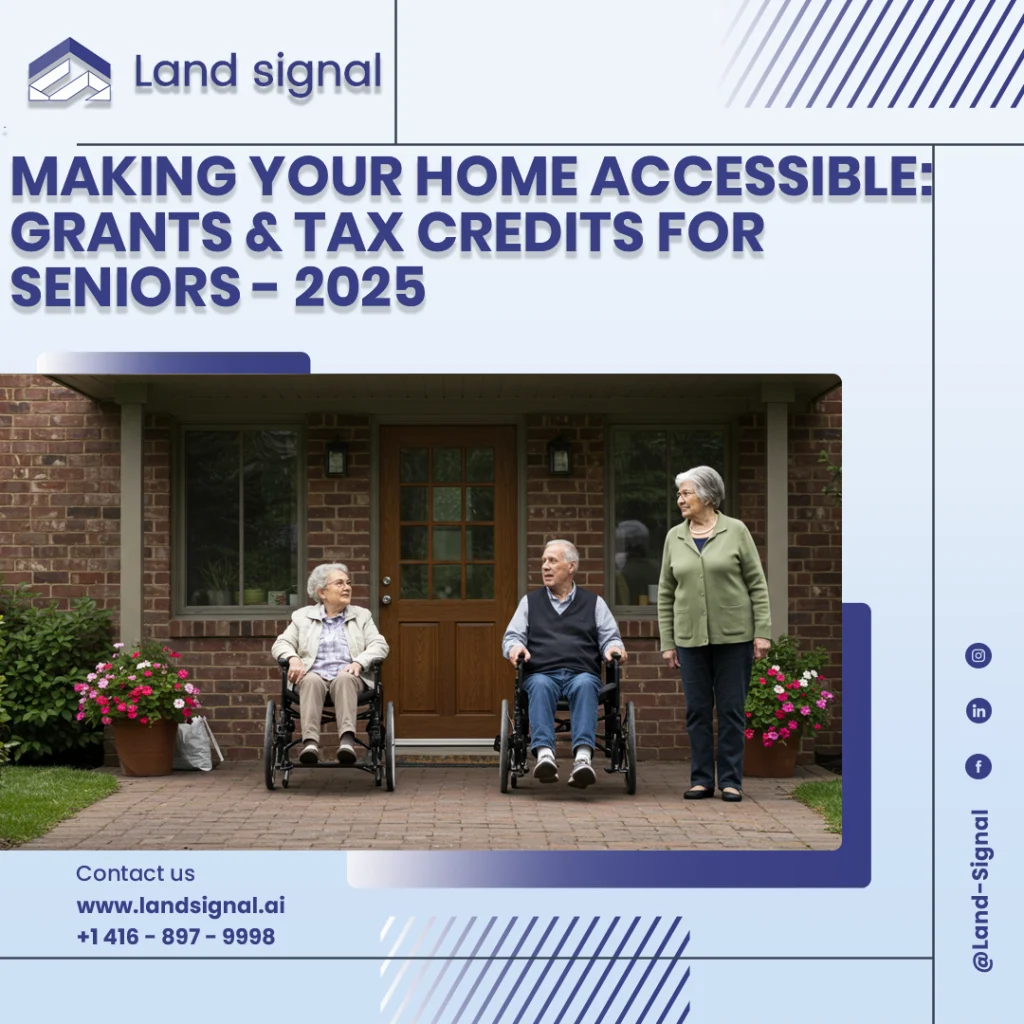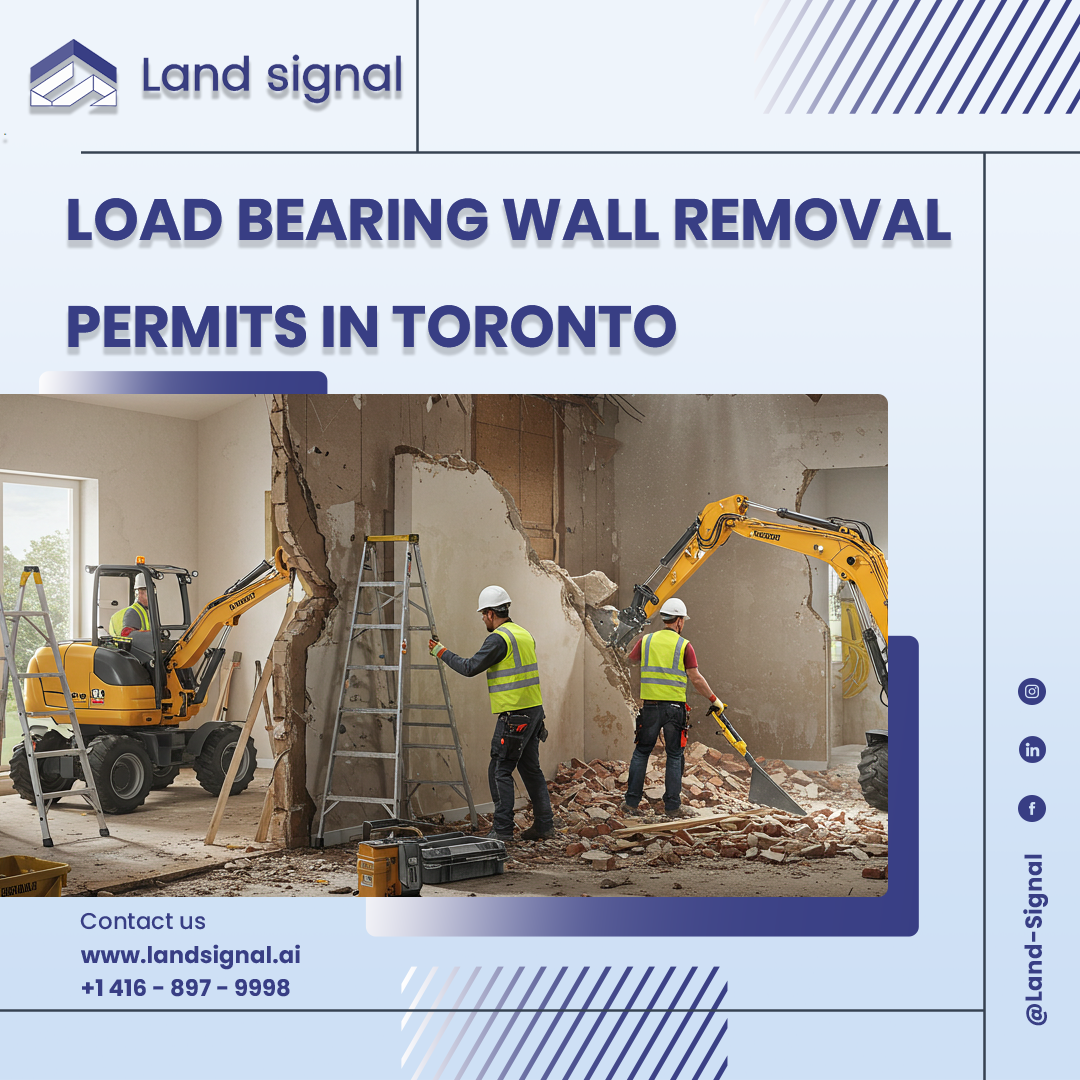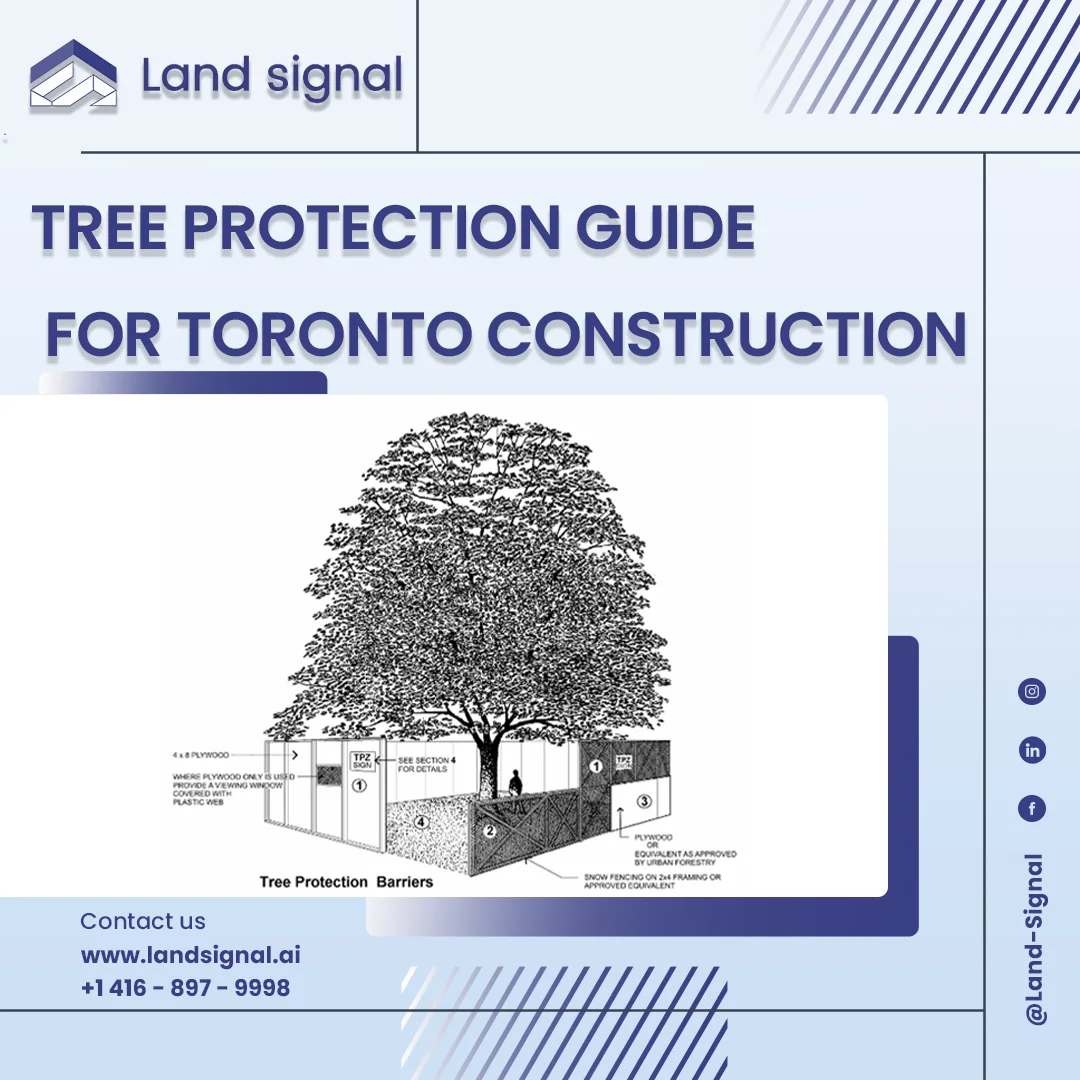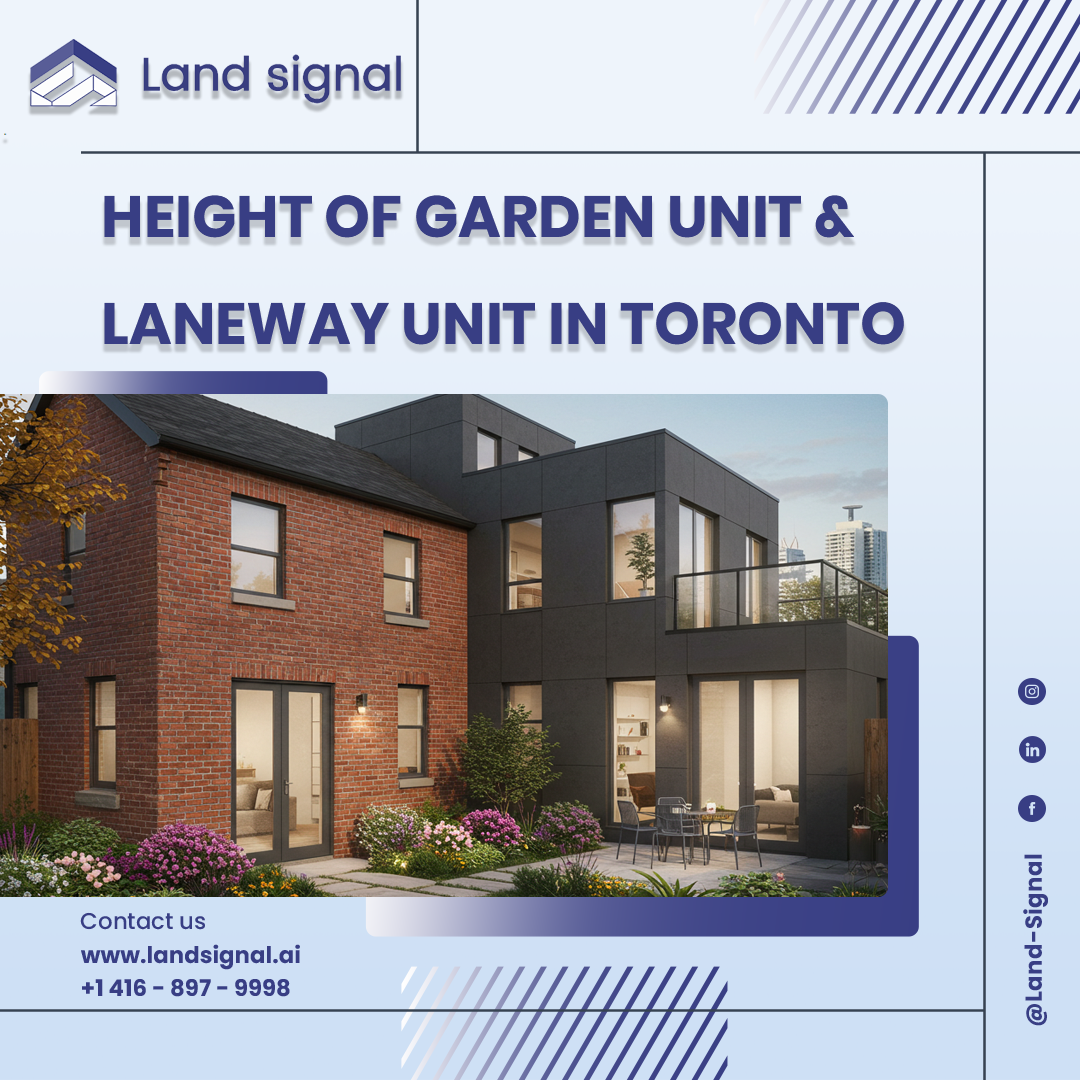Growing older shouldn’t mean giving up the comfort of your home. With the right modifications, such as sturdy grab bars, a stair lift, wider doorways, and a safer bathroom, many seniors can continue living independently. While the cost of these upgrades can be a real concern, multiple grants, loans, and tax credits are available in Ontario and Toronto in 2025 that can help.
This guide explains which programs matter, what counts as an eligible renovation, how to prepare an application, and simple, low-cost changes you can make immediately. You’ll also find a practical checklist and information on how Land Signal can help you through the whole process.
Start Your Project with Confidence
At Land Signal, we assist with construction and renovation permits, as well as Garden House and Laneway Suite designs. Let our experts guide you through every step.
At-a-glance: Key programs (quick summary)
- Home Accessibility Tax Credit (HATC) -15% on up to $20,000 in eligible renovations. Qualifies: seniors 65+ or those eligible for Disability Tax Credit; relatives may claim for qualifying individuals.
- Multigenerational Home Renovation Tax Credit (MHRTC) -15% refundable on up to $50,000 to create a self-contained secondary unit for a qualifying senior or adult with disability. One claim per qualifying individual’s lifetime.
- Ontario Seniors Care at Home Tax Credit 25% refundable, up to $1,500; targeted to Ontario residents aged 70+ in low–moderate income brackets.
- Ontario Renovates (municipally administered) forgivable loans and grants for accessibility upgrades; amounts and eligibility vary by city (example: London 2025 offers up to $25,000 loan with first $5,000 forgivable plus up to $5,000 accessibility grant for rental units). Funding often first-come, first-served.
- Home & Vehicle Modification Program (HVMP) – March of Dimes: up to $15,000 (lifetime) for home modifications; up to $15,000 every 10 years for vehicle modifications. Priority based on assessed need.
- City of Toronto environmental grants & HELP loan -energy and resilience programs (not accessibility-specific) that can improve comfort and reduce costs; HELP can provide loans up to $125,000 repayable via property tax.
Programs – Full details
1) Home Accessibility Tax Credit (HATC) -Canada
What it offers:
A 15% tax credit on eligible home renovations that help a qualifying individual access their home safely or reduce the risk of injury. Up to $20,000 of eligible expenses can be claimed in a tax year.
Who qualifies:
Seniors aged 65+ or anyone eligible for the Disability Tax Credit? A relative can claim on behalf of a qualifying individual who lives in their home.
Notes:
Eligible work must be permanent and integral to the home. Keep full documentation, including contractor invoices, receipts, and proof of payment, as the CRA may request them.
2) Multigenerational Home Renovation Tax Credit (MHRTC) – Canada
What it offers:
A refundable 15% credit on up to $50,000 of eligible expenses when you create a self-contained secondary unit to house a qualifying senior (65+) or an adult eligible for the Disability Tax Credit. The renovation must be completed in the tax year and meet local permit and by-law requirements.
Who qualifies:
Homeowners who add a code-compliant secondary suite so that a qualifying relative can live with them may claim only one renovation for that individual’s lifetime.
Notes:
Because this is a refundable credit, it can produce a benefit even if you don’t owe tax. Ensure the new unit meets all municipal rules and obtain required permits before starting work.
3) Ontario Seniors Care at Home Tax Credit – Ontario
What it offers:
A credit equal to 25% of eligible medical and accessibility expenses, up to a maximum of $1,500, can be refunded.
Who qualifies:
Ontario residents aged 70 or older (or those with a spouse or partner aged 70 or older). The program is designed for low-to-moderate income households, and benefits phase out as income rises. A common reference point for phase-out is a household income of about $65,000, but check the official guidelines for precise thresholds.
4) Ontario Renovates – municipal program (example: London 2025)
What it offers:
Municipally run forgivable loans and grants to repair homes and fund accessibility work. Program details vary by city.
Example (City of London, 2025):
• One-time loan up to $25,000 for repairs (first $5,000 forgivable).
• Up to $5,000 grants for accessibility modifications for landlord/tenant units.
• Eligible upgrades include ramps, stair lifts, grab bars, raised toilets and height-adjustable counters.
Who qualifies:
This program is designed for low- to moderate-income homeowners, often seniors or persons with disabilities. You must own and occupy the home (or have your landlord’s consent if you are modifying a rental property). Funding is typically first-come, first-served, and program parameters differ by municipality, so always check the local intake details.
5) Home & Vehicle Modification Program (HVMP) – March of Dimes Canada
What it offers:
Grants are available to remove life-safety barriers. Home modifications are covered up to $15,000 lifetime, and vehicle modifications are covered up to $15,000 every 10 years. Typical items include modular ramps, stair lifts, vertical/platform lifts, and ceiling track systems.
Who qualifies:
Ontario residents with permanent mobility-affecting disabilities. Applications require medical documentation and contractor quotes, and they will be prioritized based on assessed need.
Critical note:
HVMP will not reimburse you for work done before you are approved. Apply and receive approval before you start doing paid work.
6) City of Toronto environmental grants & HELP loan
What it offers:
Programs to make homes more energy efficient and resilient (air sealing, insulation, heat pumps, basement flood protection). The Home Energy Loan Program (HELP) can offer low-interest loans up to $125,000, repaid via property taxes.
Who qualifies?
Many Toronto homeowners are unaware that many programs require an energy audit and have specific eligibility criteria? While these programs aren’t accessibility-specific, they can make a home healthier and less costly to operate, which are especially valuable benefits for seniors aging in place.
Having Trouble Finding the Right Programs? We’ll Help You Get Them
Instead of spending hours searching government websites, let us do the work for you. Create a free Land Signal account and our support team will send you the direct program links and guide you to the right application pages. Quick, simple, and stress-free.
What counts as an “eligible renovation?
To qualify for tax credits or many grants, work must be a permanent change that either:
- Improves access and mobility inside or into the home (entering, exiting, moving between rooms)
- Reduces the risk of injury (falls, burns, strain)
Common eligible examples
- Ramps and modular ramps.
- Stair lifts, vertical platform lifts.
- Widened doorways/hallways.
- Roll-in showers, walk-in bathtubs, accessible bathrooms.
- Grab bars, raised (comfort-height) toilets, accessible counters.
- Lever-style taps and non-slip flooring.
Not eligible
- Temporary solutions (portable ramps)
- Purely cosmetic upgrades (paint, décor)
- General repairs not related to accessibility (roofing, landscaping)
- Work completed before program approval (some grants/ HVMP will not reimburse retroactively)
Practical tips for applying read this before you start
- Check for current program rules.
Programs change. The Ontario Seniors’ Home Safety Tax Credit ended in 2022. In 2025, funding and program details for Ontario Renovates can change in different municipalities. Always check the official program pages or ask a specialist (like Land Signal) to confirm the current terms. - Mind the timing and intake rules.
Many municipal programs operate within limited funding windows. Ontario Renovates, for example, is often first-come, first-served. However, HVMP prioritizes need over application time. - Plan for permits before you start.
Many accessibility renovations require a building permit and must comply with local codes, especially those of the MHRTC, which stipulates that secondary suite must adhere to bylaws. Apply for permits early. - Get contractor quotes and a clear scope of work.
Most programs require detailed quotes with scope, materials, and costs. Use contractors experienced in accessibility work. - Don’t over-invest just to chase small grants.
Match the scale of your renovation to your actual needs. Although grants and credits lower costs, they aren’t always worth the disproportionate expense. Focus on high-impact changes first. - Keep meticulous records.
Save contracts, invoices, receipts, before/after photos and proof of payment. The CRA and programs like HVMP can require detailed documentation. HVMP will not reimburse retroactive work. - Ask questions if you’re unsure.
If you are unsure about the eligibility of a particular item or how credits apply, consult a tax professional, program administrator, or use a service that tracks these programs for you.
Low-cost improvements that make a big difference
You don’t always need major construction to improve safety. Consider small, affordable upgrades that increase independence and comfort:
- Handheld shower heads and non-slip bath mats.
- Tub cut-outs or low-threshold shower bases (less expensive than full remodels).
- Lever door handles and lever faucets.
- Motion-activated lighting in hallways and entrances.
- Grab bars installed by a qualified contractor (safer than DIY).
- Modular or portable ramp systems where permanent ramps aren’t feasible.
- Ceiling-mounted track lifts for those with severe mobility constraints (often eligible under HVMP).
- These small changes often qualify for tax credits (if permanent) and are effective when paired with larger accessibility projects.
Checklist -step by step
- Assess needs: list the hazards and needs in the home (bathroom, entryway, stairs).
- Research options: check HATC, MHRTC, Ontario Renovates, HVMP and local municipal programs.
- Get quotes: obtain detailed quotes from accessibility-experienced contractors.
- Confirm permits: check if your planned work needs a building permit. Apply before work starts.
- Apply for grants: submit any municipal or NGO grant applications (Ontario Renovates, HVMP, etc.) before starting funded work.
- Complete renovations: hire licensed contractors and document the work (photos, receipts).
- Claim tax credits: when filing taxes, keep all receipts and supporting documentation for HATC/MHRTC and provincial credits.
- Maintain records: keep the files for CRA or program audits.
How Land Signal can help
- Navigating grants, loans, and tax credits can be confusing and time-consuming. Land Signal simplifies the process by:
- Tracking program changes at federal, provincial and municipal levels so you don’t miss new funding windows.
- Helping you identify which programs fit your situation (age, income, ownership status, disability documentation).
- Connecting you with vetted contractors experienced in accessibility retrofits and permits.
- Assisting with permits and paperwork, and ensuring your project is code-compliant so you don’t lose eligibility.
- Providing planning and budgeting tools so you can see cost vs. benefit before you commit.
If you want help finding the right program, getting quotes, or preparing applications, LandSignal will walk you through every step.
Final thoughts
Accessibility upgrades can be life-changing. With careful planning, they can keep seniors safe, independent, and comfortable in their homes and be affordable. Strategically use grants and tax credits, plan for permits, and document everything. If you’d like help navigating the options, Land Signal can guide you from your initial idea to the final inspection.
Ready to start? Visit LandSignal.ai or contact our team for personalized guidance. We’ll help you find the right grants, trusted contractors, and correct permits, ensuring your project goes smoothly.
FAQ: Grants & Tax Credits for Seniors in Ontario (2025)
Do I need a building permit for accessible renovations?
Yes, many projects, such as building a ramp, installing a stair lift, or constructing an accessory dwelling unit, require a building permit. Always confirm this before starting, since some programs, like MHRTC, require proof of compliance.
Can I apply to more than one program at the same time?
Yes, you can combine tax credits with municipal grants or the HVMP as long as you meet the eligibility requirements for each program. Be sure to keep detailed records for each.
What if I rent my home?
Some programs allow accessibility improvements in rental units, but you’ll need landlord consent. Ontario Renovates, for example, includes grants for modifications in rental properties.
Do temporary solutions (like portable ramps) qualify?
No. To be eligible, renovations must be permanent and integral to the home. Temporary or removable items usually don’t qualify.
How long does approval take?
Timelines vary. HVMP applications are prioritized by need and can take weeks. Municipal programs like Ontario Renovates may close quickly once funding runs out, so apply early.
Can a family member claim these credits on my behalf?
Yes. For programs like HATC, relatives can claim expenses if the qualifying senior or disabled individual lives with them.
What if my project costs more than the maximum credit or grant?
You’ll only receive funding up to the program cap, but larger projects may still be worth it for the safety benefits. Focus on changes that have the biggest day-to-day impact.




